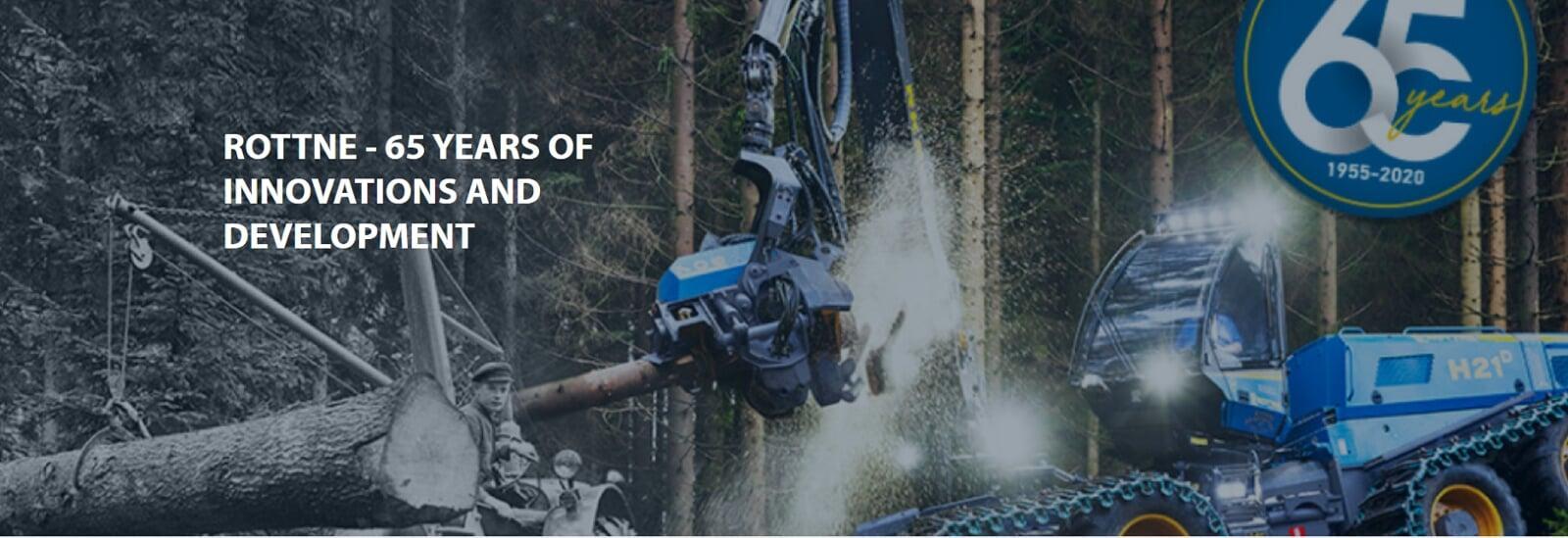Rottne history – from wire crane to world celebrity
Our history begins in the forests of Löpanäs outside Rottne. An ingenious young man was there, manually loading logs. Börje Karlsson, founder of Börjes Mekaniska which eventually became Rottne Industri AB, was helping his dad at the time, running timber in the forest. The family’s trusted companion, their horse, had been given leave from the pulling the heavy logs out from the forest and a tractor was being used instead.
Loading was still done by hand and it was then that Börje began thinking. “Why should the tractor be standing here, softly idling and not helping out while I was here, struggling to roll logs up onto the trailer?”
Work with what would become the first crane began picking up speed. The design was simple, manufactured from a couple of plough parts, a piece of timber, a winch mounted at the power output, a length of cable and a pair of timber tongs.
Compared with today’s powerful cranes, it sounds unlikely, but “Börje Crane” worked perfectly and, there and then, became the basis for something big.
1955-1965
1955-1965
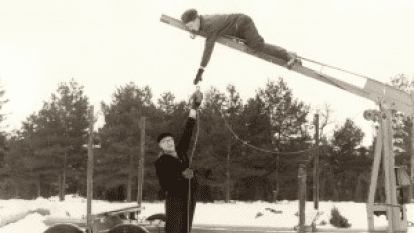
New workshop and export to other continents
The crane’s popularity grew. Sales rocketed with such intensity that the forge at the family farm was no longer enough and a new workshop was acquired.
The fame of the crane spread beyond the Swedish border and it was exported to, among other countries, Denmark and Norway. Some of the more unusual export countries at the end of the company’s first decade were Tanzania and Chile. The order to Tanzania went through one of the UN’s organs, while the Chilean sale was made directly with the customer in the country.
It is still unclear how word of a forestry crane from small Rottne in Småland had reached all the way to South America, but the Chileans were clear: “We want a crane from Rottne!” This despite the fact that other companies at this time, in the mid-1960s, had started producing similar cable cranes.
1965-1975
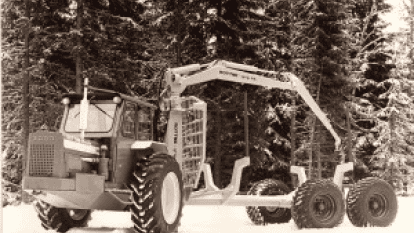
Smash hit with Blondin
Towards the end of the 1960s, 1968, the first forwarder was launched. A complete forestry machine that would be a big seller that no one had dared dream of. The competitor had their Brunette, so the new machine was simply named Blondin.
After many development hours and a series of prototypes, it was finally time for the premier showing. The place was the forestry trade fair at Elmia in Jönköping and the people in the industry were lyrical.
The cable cranes and Blondin are the products that have meant most for our development. Even now, people are still talking about the wonder from Rottne and owning a Blond has nearly reached cult status.
Launch of Blondin went from success to smash hit. Unlike its competitors, Rottne had developed a relatively small and lithe forwarder, with good load and operating characteristics.
Machine owners and operators loved the durable work horse that was both easy to run and service, and that was also very reliable. For those wanting a robust machine with good economy, Blondin was an excellent choice.
1975-1985
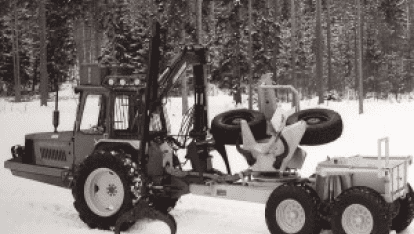
The first processor and first with parallel crane
Whether it was the fresh air that led to Börje Karlsson’s imaginative ideas for new innovations will remain unsaid, but it was during a holiday in the mountains with the family in 1976 that the idea began to grow of what would become the first one-man controlled processor. The result was the prototype for the 770 processor, which was delivered to customers the year after.
With the processor we now had a comprehensive machine programme on the market. Ten years after production of the first forwarder, it was now time to manufacture and sell processors, the predecessors of today’s harvesters.
Whether Börje spent any time at all on the slopes during that mountain holiday is unclear. historien.
Crane with raw strength
As so many times in the past, the Rottne 1981 was behind yet another innovation. The RG-81 parallel crane, launched with the new felling unit RF-81, meant that machine operators could now grasp a tree, fell it and then lift it to the processor directly from the stump. The crane could reach out ten meters and had a lifting force of 1,5 tonnes at full extension. Thanks to the strength of the crane, attention was now turned to developing a new and suitable felling unit.
From chain to gear
In the same year, the idea grew forth for a geared bogie. Blondin was equipped with a roller-driven bogie, but Börje and the chief engineer at the time, Risto Hokkanen, wanted to make the machine more capable when operating over difficult terrain.
There were bogies on the market with chains in the bogie boxes, but it was felt that their service life was not acceptable. Instead, the duo started experimenting with a prototype using gears, as they were convinced that this would produce a better solution. They involved NAF and together developed a gear bogie based on Börje and Risto’s idea.
Virtually all the companies in the world that manufacture forestry machinery now employ geared bogies on their forwarders and harvesters. What not everyone knows is that those behind the idea for the modern geared bogie worked at Rottne in Småland.
Popular replacement system saves both time and money
At the end of the 1970s, we launched our replacement system, which today is called Rottne Xparts and it quickly became popular. With Rottne Xparts, you save both time and money by preventively replacing parts on your machine during a previously scheduled stop. The risk of accidents is eliminated, and you can be confident that unwelcome downtime in the forest will be avoided. Even in the event of unscheduled machine downtime, it will not be much longer than if it was scheduled, regardless of whether it is a harvester or forwarder. This is a concept that only we at Rottne offer. Something we are quite proud of.
1985-1995
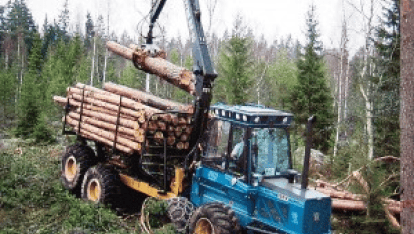
New Rottne Rapid stuns the market
When the world’s largest forestry trade fair, Elmia Wood was held in June 1985, Rottne Industri did not exhibit. Both Swedish and international forestry people wondered why, but nonetheless, understood enough to know that something big was in the works. A few months later, the news came out.
The classic, faithful servant and best-seller Blondin was being retired and replaced by the Rottne Rapid. A machine that was comprised of components, instead of as previously, being tractor-based.
Rarely or never had interest been so great for a new model series from Rottne as when the Rapid programme was launched in the home forests of Småland. The commitment was major, both at the national and international levels, and the visitors were not disappointed. Rottne Industri had done it again.
Steerable wagon simplifies operation
Operating a tractor and wagon in the forest can be difficult, so how could we simplify this for forwarder operators? This led to development of the prototype for the Rottne Rapid, the first steerable wagon.
A year later, the machine was put in service. Thanks to this, operators no longer needed broader extraction lanes due to trailers requiring more space than the machines. So, if you could pass between two trees with a tractor, the wagon followed along on the same path.
The steerable wagon bogie remains as a technical solution that we are alone in having on our forwarders. Since 2009, when the last update was made, it has been standard equipment on all manufactured Rottne F13 units.
In 1991, the small and stand-operated harvester Rottne 2000 was launched, the predecessor to today’s Rottne H8.
Rottne SMV
At the close of the 1980s the company needed to expand, but with an overheated labour market in and around Växjö, it was difficult to find skilled labour.
The solution was to acquire Rottne Stensele Mekaniska Verkstad, SMV, outside Storuman in the Västerbotten district in 1988. This is now where we produce all heads, cab frames and cranes. The factory is currently one of the Storuman municipality’s largest employers.
1995-2005
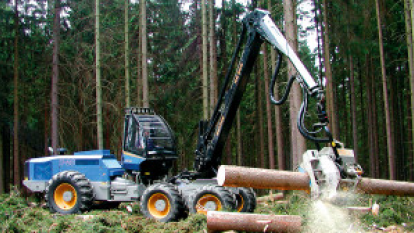
H-series – harvester for both operators and owners
During the latter part of the 90s, the technicians and engineers started work on producing a completely new line of harvesters. An initiative that was undoubtedly the biggest Rottne Industri had ever made for an individual model programme. With the new H-series harvester, we showed that we were not satisfied with just being one of the many players in the industry. With the H-series, we also wanted to lead development. First out was the Rottne H20, the largest harvester the company had built.
Behind the development of the new H-series was awareness that the forestry industry had made rapid strides during the recent decades. To remain competitive in the industry it was therefore necessary for us to take the next technical step.
Operator in focus
The requirements on the new H series were high and the bar was already set at an early stage. This was going to be the best harvester on the market. The focus was on the operator environment, the cab, with all this entails.
The cab would be the best on the market. At the same time, the machine would provide good overall economy for buyers. Accordingly, it was a question of building a machine that could not only harvest large volumes, but that was also reliable and easy to serve. In other words, the H-series would be a machine that both operators and machine owners would want. Strong sales figures showed that it had hit the nail on the head.
What many didn’t know, although suspected, was that Rottne H20 was a part of a series of harvesters. In the subsequent years, we first presented a thinning harvester, the Rottne H8, followed by a mid-size harvester, the Rottne H14.
2005-2012
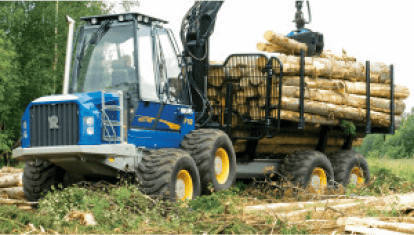
During the 2000s, our new F-series of forwarders was developed.
The first in the industry with cab damping
The focus on a good cab and operator environment continues and the initiative results in the cab damping system Comfort Line 2007, something that we were first with on our machines and that for several years only we could provide.
Comfort Line was initially fitted on the Rottne F18 and Rottne F10, but today it is on all our forwarders. Since 2011, there has also been a variation of the Comfort Line for our harvesters. With the design, cab vibrations and impact have been significantly reduced, and crane work and operation in terrain have become considerably smoother.
Since its launch, the system has been gradually refined and developed into the current Generation 2 with improved software, more robust construction and more precise positioning.
2012-2019
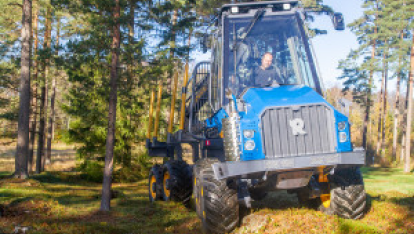
Development and improvements when B and C become D
In our factories, there is continuous development and refinement of the components on our machines. Today our B and C models have been replaced by D, which entails a number of improvements for virtually the entire machine. Machines that were really good before have now become even better, stronger and more powerful.
Narrower and stronger
For forwarders, there was demand both for a new, smaller machine as well as a much larger machine. The result was the Rottne F10D in a new, narrower and lithe version. At the same time, big brother Rottne F18D was upgraded to the powerful F20D, with even better traction than before. We call it the workhorse. A machine that is a perfect match for our largest harvesters. The forwarder family was also expanded with the Rottne F11D, a compact forwarder in the mid-size class and with high load capacity.D in a new, narrower and lithe version. At the same time, big brother Rottne F18D was upgraded to the powerful F20D, with even better traction than before. We call it the workhorse. A machine that is a perfect match for our largest harvesters. The forwarder family was also expanded with the Rottne F11D, a compact forwarder in the mid-size class and with high load capacity.
Strong, stronger, Rottne H21DD
Rottne H20 was introduced in 2001 as a strong harvest for final cut. Since then we have developed and improved the machine. The result became the Rottne H21D which was launched in 2014 – an even stronger and more efficient harvester, which is ideal in the final harvesting when only the best alternative is an option.
Continuous environmental approach
We all have a shared responsibility for the forest and nature, which is an important resource. This why we have a continuous focus on the environmental aspects at all our plants and why it is natural part of our day-to-day work. During 2019, we gradually introduced Step V engines on all harvesters and forwarders, which meet the EU standards for diesel engines.
HVO – an environmentally friendly alternative to diesel
All our machines can now also run on HVO, hydrogenated vegetable oil. HVO is a type of biodiesel that is chemically identical or very similar to fossil diesel fuel. This means that fossil diesel can be fully replaced.
We use eco oils that are easy to break down. In replacement of hoses we are minimizing spills with the use of vacuum pumps, and our eight-wheeled machines all exert low ground pressure out in the forest.
The same environmental approach applies to the blue paint. After extensive testing of different paint systems, we now use Polane, a paint with less than half the solvent emissions along with reduced paint consumption as a result.
Rottne Connect – the smart tool
In 2017, we launched Rottne Connect, our Internet-based telematic system – the ideal tool for avoiding problems – and installed on all new machines that leave the factory. With this system, you can easily obtain current data on the machines you are using – around the clock.
2019-2022
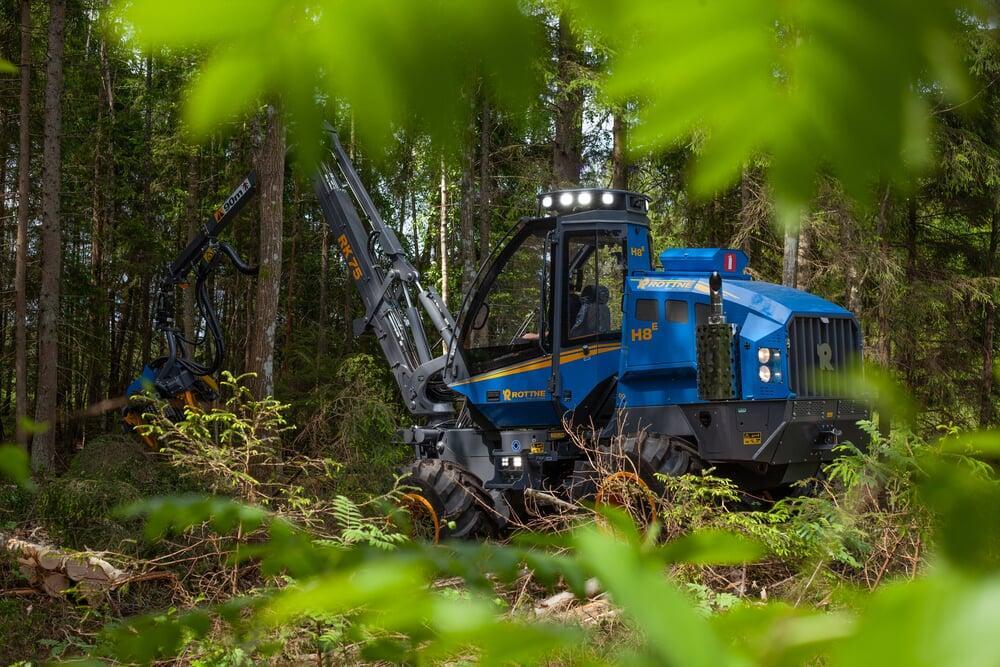
Today, tomorrow and after that
How our machines will be equipped in the future remains to be seen, but it truly is an exciting journey we have before us. We see each day as a challenge, as a new opportunity to develop, refine and improve. We take responsibility from the first production minute of a new machine, to delivery and handshaking with happy owners. A responsibility that continues in follow-up, service and spare parts.
We want ownership of a Rottne to be characterised by a sense of security, both out in the forest and when the engines are shut off at the end of the day.
This was Börje Karlsson’s approach when he built the first crane, in the forge at the family farm.
And we have continued in this spirit. Every day.

